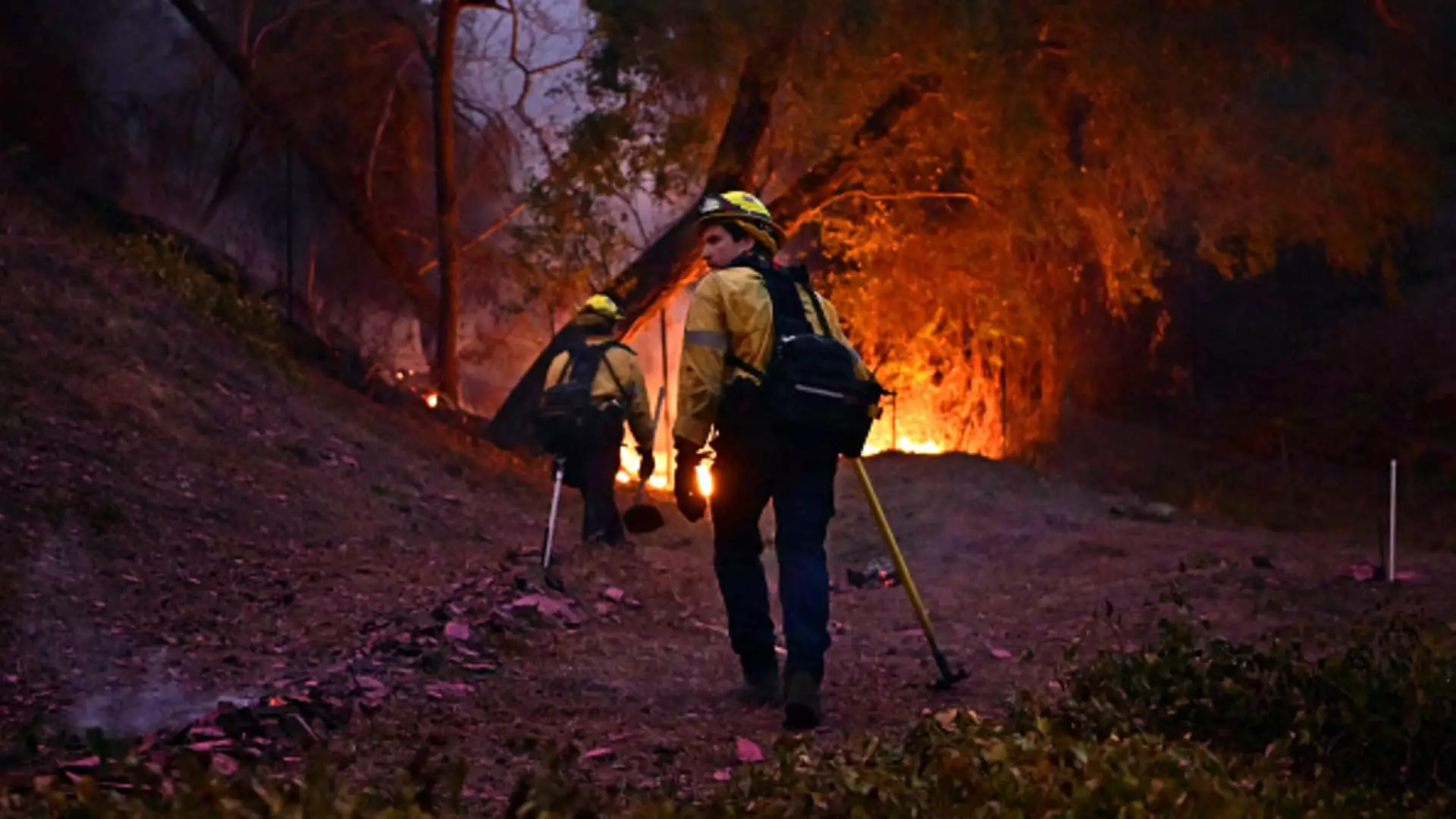The wildfires that have swept through Los Angeles County have spiraled into a tragic disaster, with the confirmed death toll tragically climbing to 16 as officials scramble to address the damage. This incident, marked by its rapid escalation, has left communities reeling—not just from the loss of life but also from the destruction of homes and livelihoods. The coroner’s office reported that five casualties were linked to the infamous Palisades Fire, while eleven other lives were claimed by the Eaton Fire, highlighting the widespread devastation the area is currently enduring.
The earlier reports had indicated a death toll of 11, a number officials anticipated would rise as the search for victims intensified. Cadaver dogs, deployed into areas that have been reduced to ash and rubble, are performing crucial work in searching through the devastation. The grim reality is that every day brings new challenges as firefighters and rescue teams race against time to combat the relentless flames and to locate the missing.
Firefighters are on high alert, battling to contain the wildfires before strong winds, notorious for fuelling infernos, sweep through the region. These winds posed not just a threat to the immediate vicinity but also to iconic landmarks, including the J. Paul Getty Museum and the University of California, Los Angeles (UCLA). As flames tore through Mandeville Canyon—a locale known for its celebrity homes—helicopters circled overhead, working tirelessly to douse the blazes from the sky while ground crews engaged in a fierce fight to protect properties.
CalFire Operations Chief Christian Litz emphatically stated the need for aggressive tactics against the encroaching Palisades Fire. The ongoing crisis has turned into a fear-filled reality for many residents, as evacuation orders multiplied due to advancing flames. Local authorities, including County Supervisor Lindsey Horvath, have characterized the situation as “unimaginable terror and heartbreak,” a stark reflection of the emotional toll felt by Angelenos amid this disaster.
The scale of the wildfires is staggering. Over the past week, approximately 56 square miles of land—an area larger than that of San Francisco—has succumbed to flames, leaving tens of thousands of residents under evacuation orders. The fires have resulted in the destruction of more than 12,000 structures, an all-encompassing term that includes homes, buildings, and vehicles. As the flames spread without mercy, the economic repercussions are forecasted to reach unprecedented levels. A preliminary estimate by AccuWeather delineates damages between $135 billion and $150 billion.
Humanitarian efforts are also a critical part of the response. Volunteers have flocked to donation centers, eager to support those affected, but even these hubs have begun to experience overwhelming numbers, forcing some to turn away would-be helpers. For many who lost their homes, including residents like Jose Luis Godinez, the emotional weight of the loss is staggering. “Everything is gone,” he lamented, reflecting the sentiment of countless families faced with unimaginable losses.
In the wake of such widespread destruction, public health officials have raised alarms about the risks of returning to burnt areas prematurely. Debris can contain hazardous materials like lead and asbestos, posing significant health threats to residents who have begun to sift through their former properties. Safety officials urge those returning to wear protective gear, a cautionary tale that underscores the dangerous environment left behind by the fires.
As the situation continues to evolve, inquiries into the broader systemic issues surrounding fire management have emerged. Governor Gavin Newsom has mandated investigations to scrutinize the implications of a giant reservoir that was out of service during the crisis and other infrastructure shortcomings. Los Angeles Fire Chief Kristin Crowley has echoed these sentiments, highlighting failures in adequate funding and water supply for firefighting efforts.
The wildfires in Los Angeles have not just ignited flames; they have unveiled critical flaws within the infrastructure and response systems that, if not addressed, could lead to further tragedies in the future. As the community grapples with an unprecedented crisis, it is evident that effective leadership and resources are essential for recovery and prevention. The grief, challenges, and questions that loom large serve as a stark reminder of both the power of nature and the resilience required to overcome it.



Leave a Reply